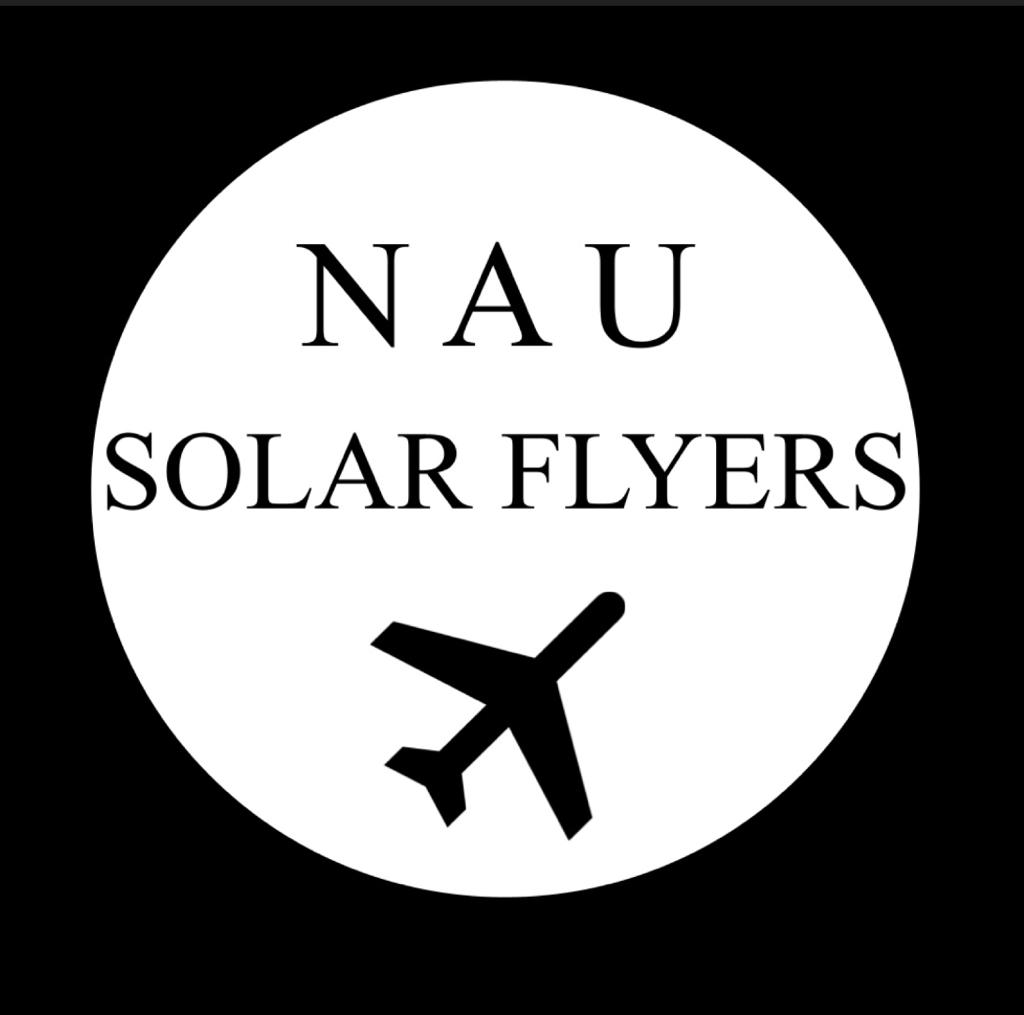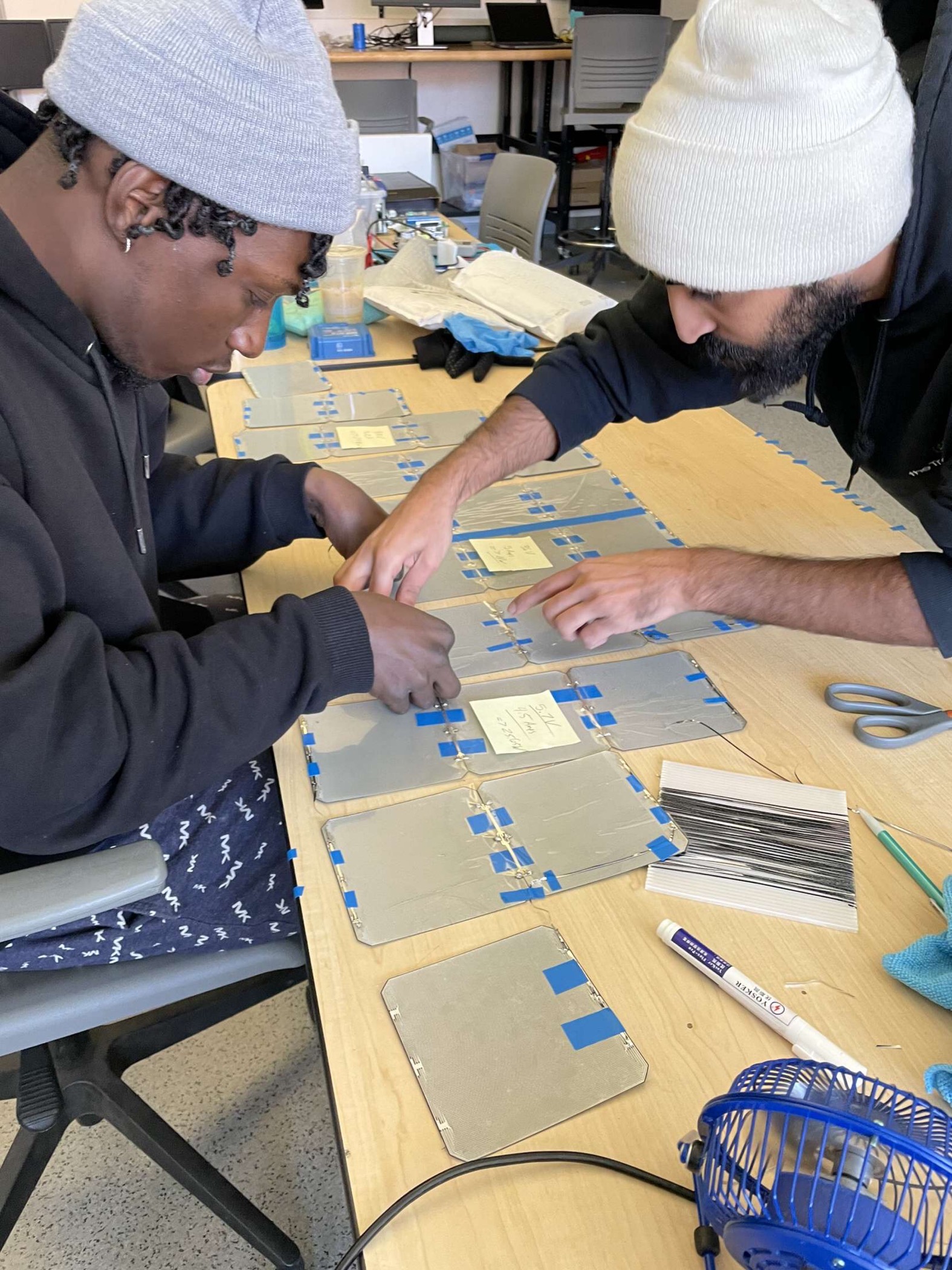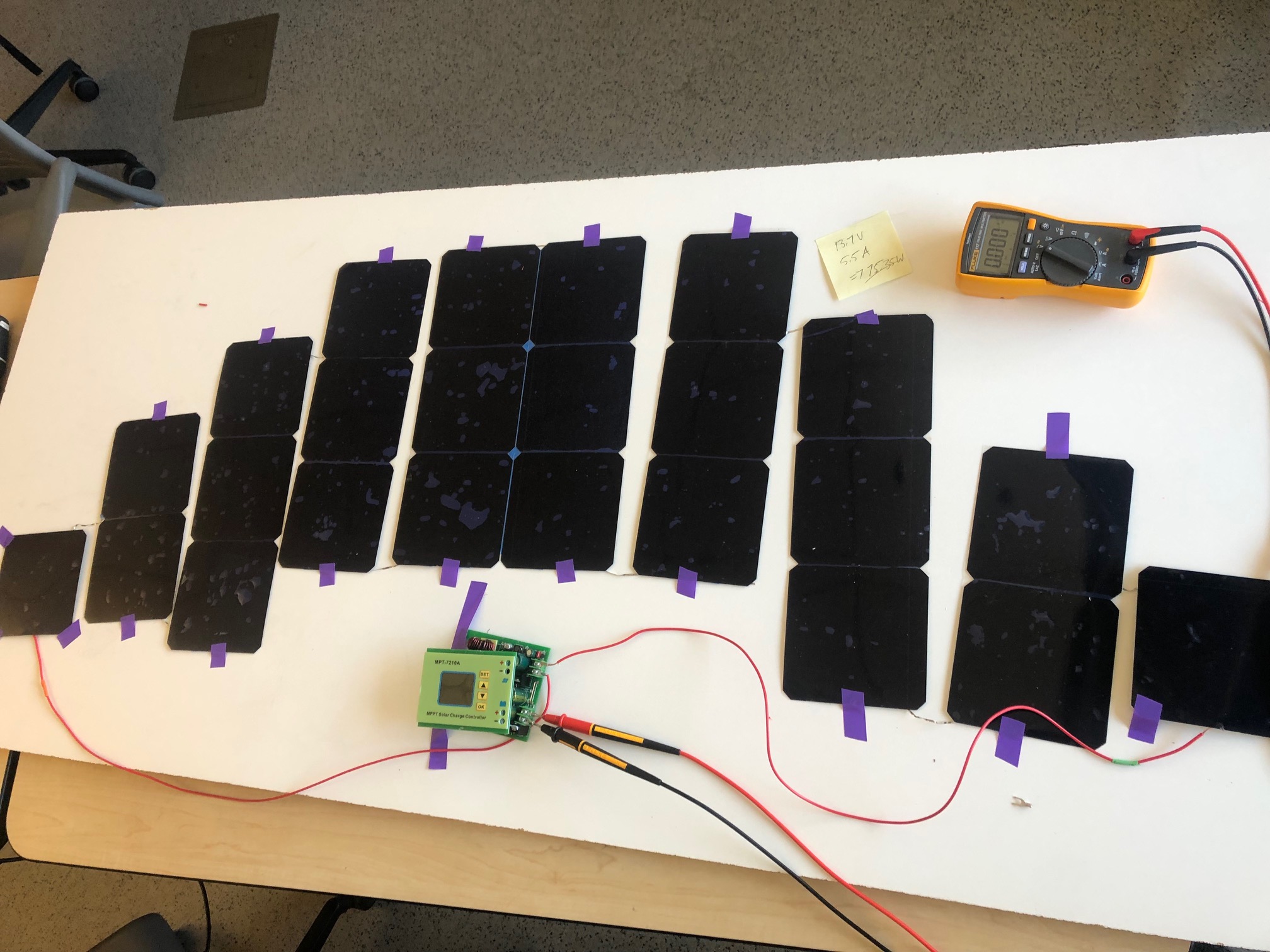In recent years, the demand for renewable and sustainable energy sources has prompted an increased demand for their applications. The sun is an everlasting source of energy, so the idea of maximum power harvest is pivotal. Drones are used for top-level surveillance, and recreational use, and can be weaponized as well. The goal of the project is to construct a lightweight, unmanned aerial vehicle (UAV), whose flight time can be extended by at least 50% from solar power. This is achieved by recharging a lithium polymer battery that powers the drone with solar technology to increase its capacity. Within this project, the concepts of maximum power point tracking, solar array development, and power transmission are heavily applied. This project is funded by W.L. Gore & Associates and the CEIAS department at Northern Arizona University. The client for the product is David Willy, the senior lecturer of Mechanical Engineering at Northern Arizona University. Our team will be working closely with the Sol Avem mechanical engineering team to construct the solar-powered UAV. However, our main focus is to adequately implement solar technology to achieve prolonged flight, not the construction of the UAV.
Solar Powered UAV
Greetings! We are the NAU Solar Flyers: A team committed to developing a multi-purposeful tool integrated with an optimal application of sustainable energy! Solar energy and unmanned aerial vehicles (UAVs) each carry their own benefits in our world. Solar power is a popular and sustainable source of energy with new applications every day, while UAVs can be used for surveillance, weaponization package transportation, casual enjoyment, and more! We are excited to show you how our product is made and what it brings to the table!






